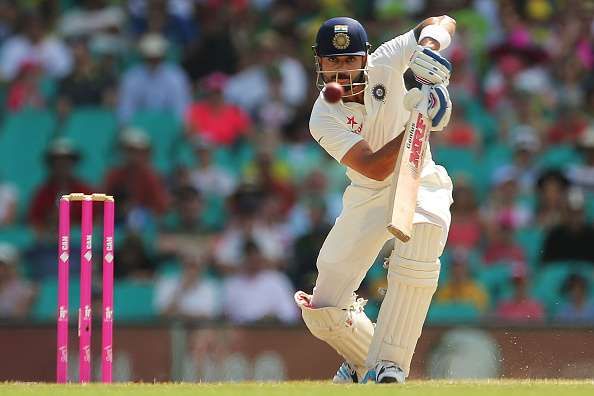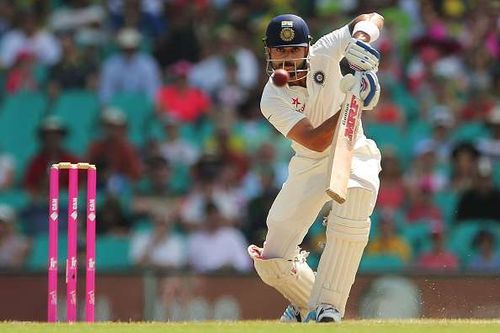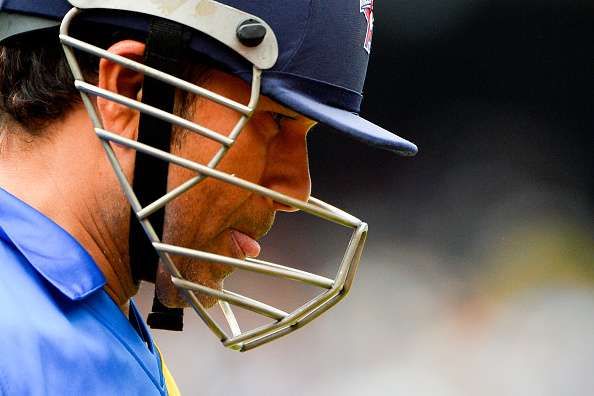
Test Cricket - the gold standard
I often get asked - “Is Test cricket the pinnacle or is it the shorter version?”
I have been party to many discussions on this at camps, talk shows and at informal conversations with romantics of the game. I would wonder back then and still do so - what should I tell my son and the future aspirants about Test cricket? Why is it called so?
The answer might seem a tough one. And there are reasons aplenty that complicate the answer given the whirlwind changes taking place to the game and the masses swaying in favour of shorter sprints when compared to the marathon. For me, it’s a no-brainer. It is Test cricket that’s the gold standard.
But how do I tell this to young kids – kids who turn up with new kits at base camp about what it is to be at the summit of a mountain? How do I drill it into them that the trek is bound to be arduous and the time at the summit might even be limited?
It’s like teaching a graduate level course to a 1st grader while imprinting a vision of the vistas that lie ahead and telling them not to settle for anything less. Focus and goals are the cornerstones for any aspiring sports person and many careers often end up in fuzzy corridors for want of these. Yet, as any international sports person would say, mere focus and the goal would not take you anywhere close to the bearings that you have marked out for yourself. The consort for the aforementioned would be an unadulterated passion and a self-belief cloaked in steel - features that are often the missing links in many entrants.
For all such individuals, Test cricket is the best source of inspiration. Here's why.
Also read: India vs Australia, 2017: Michael Clarke backs Ajinkya Rahane and Ishant Sharma ahead of the second Test
How many of Virat Kohli’s great knocks in T20s do you recollect, despite he having done it time and again? Apart from the knocks at the World Cup, perhaps not many. And how would they compare to the glorious Test innings he played on the Australia tour of 2014-2015. Four sublime centuries and almost taking India home once. All done while taking over mid-series as captain and doing what none of his illustrious predecessors had done before. It was heady stuff. Etched in memory forever and the yardstick very obvious to discern.
Behind the scenes and in open scrutiny too, the preparation for the trek and the ascent itself is quite arduous. We learn early on that the more we bleed in practice, the less we do so on the field. We prime ourselves for it. Imagine trekking through a steep, unpaved path at a slow pace. You need to be nimble-footed, sure on the eye, deft on the balance and safe with the stick. There are turns and twists aplenty. You turn a corner and realise it’s just the first of many.
Facing Saqlain Mushtaq, Muralitharan, Anil Kumble, Shane Warne would be no different to an arduous trek. They would test you all the time; constantly posing questions. Suddenly the terrain changes and you are faced with a raging river. Try as you might, you cannot swim upstream or against the swift current. Add to the mix a strong possibility of rip tides and undercurrents threatening to knock you off your feet. Shoaib Akhtar, Wasim Akram and Waqar Younis - these were fearsome rivers. What can you do but bide your time, wade carefully across and find less arduous terrain.
How about a constant uphill ascent with no respite in sight, forcing attrition? Welcome Curtly Ambrose, Courtney Walsh, Glen McGrath and Fanie DeVillers. Oh, and then there is the small matter of facing up to a new ball just when you might have just dropped guard a bit and found ways to counter the old one. The challenges are simply never ending.
Fancy yourself as a bowler and think you can thrash your way through the cluster? There’s a small matter of getting across a certain “Wall” first, then perhaps face blistering tornadoes like Virender Sehwag, David Warner, AB de Villers or a gifted swordsman like Mahela Jayawardene.
This then is the terrain of Test cricket. There are no easy sessions, no free wickets or runs handed on a platter. It varies across geographies and needless to say, the ask on the players is to be versatile. They are to hone their skills perpetually in order to face off against any opponent, regardless of the conditions and deliver consistently.
All through the 5 days, the conditions are bound to change and a session just completed can be no indicator of what's to come next. That’s why teams talk about taking it session by session, even splitting it into small segments like an over and staying in the present at all times. Mind over matter, physical abetting the mental. And for all this to be done in a group setting is simply fascinating.
Boys become men by playing Test cricket. A boyish Sachin Tendulkar did all this and more when he showcased his first glimpses of a genius in the making on his first tour of Pakistan. Bloodied but not broken. Soon after he became India’s "David" as he took on "Goliaths" like Craig McDermott, Merv Hughes, Bruce Reid and Mike Whitney in their own backyard. And he drove them to distraction while constantly punching above his height and weight, even as his esteemed seniors shook in the face of hostility. Many a time he was the man on the burning deck and he didn’t flinch.
To this day the scenes are vivid in memory - the sounds of the cracking shots as he punched off the back foot and the awe-struck acceptance from the cricketing world of a new little master from India.
Gavaskar’s Calypso, Rahul and VVS in Kolkata, Sachin again in Chennai, Kumble in Delhi, Rahul in Adelaide and Chandrashekar at the Oval - all endorsed Test cricket and the vagaries it had to offer, replete with unscripted drama.
Famously, 30 years ago, Sunil Gavaskar summoned up all his mighty skills for one last time at Bengaluru. He fought valiantly against Tausif Ahmed before walking off vanquished into the twilight. Team losses overseas notwithstanding, these heroic acts would endear itself to public memory forever.
During the 1947-48 series against a Don Bradman-led Australia side, Vijay Hazare scored hundreds in both innings of a Test match. Despite his heroic 116 and 145, India lost the Adelaide test to Bradman's invincibles. Much later, GR Vishwanath and Sandeep Patil set the MCG alight. Mohinder Amarnath wiped off blood and resumed hooking and pulling as if it was a minor scrape endured. Anil Kumble simply clamped up his jaw and had Carl Hooper and Brian Lara scurrying. These were heroes who bested the conditions, let their mind prevail over matter. These are tales of valour and no ordinary feats to be overlooked as a one-off blip on the radar.
They are worthy inductees into the proverbial “hall of legends”, not merely due to their feats, but also for bringing victories. Thus the innate beauty of Test cricket lies in the vacillating fortunes, the battles of attrition and in the mind games. Add to this the aching of mind and body to last the distance while battling to hold fort over a 5 day period and what you have are the trappings of a blockbuster – one that we call Test cricket, the gold standard for the sport.

